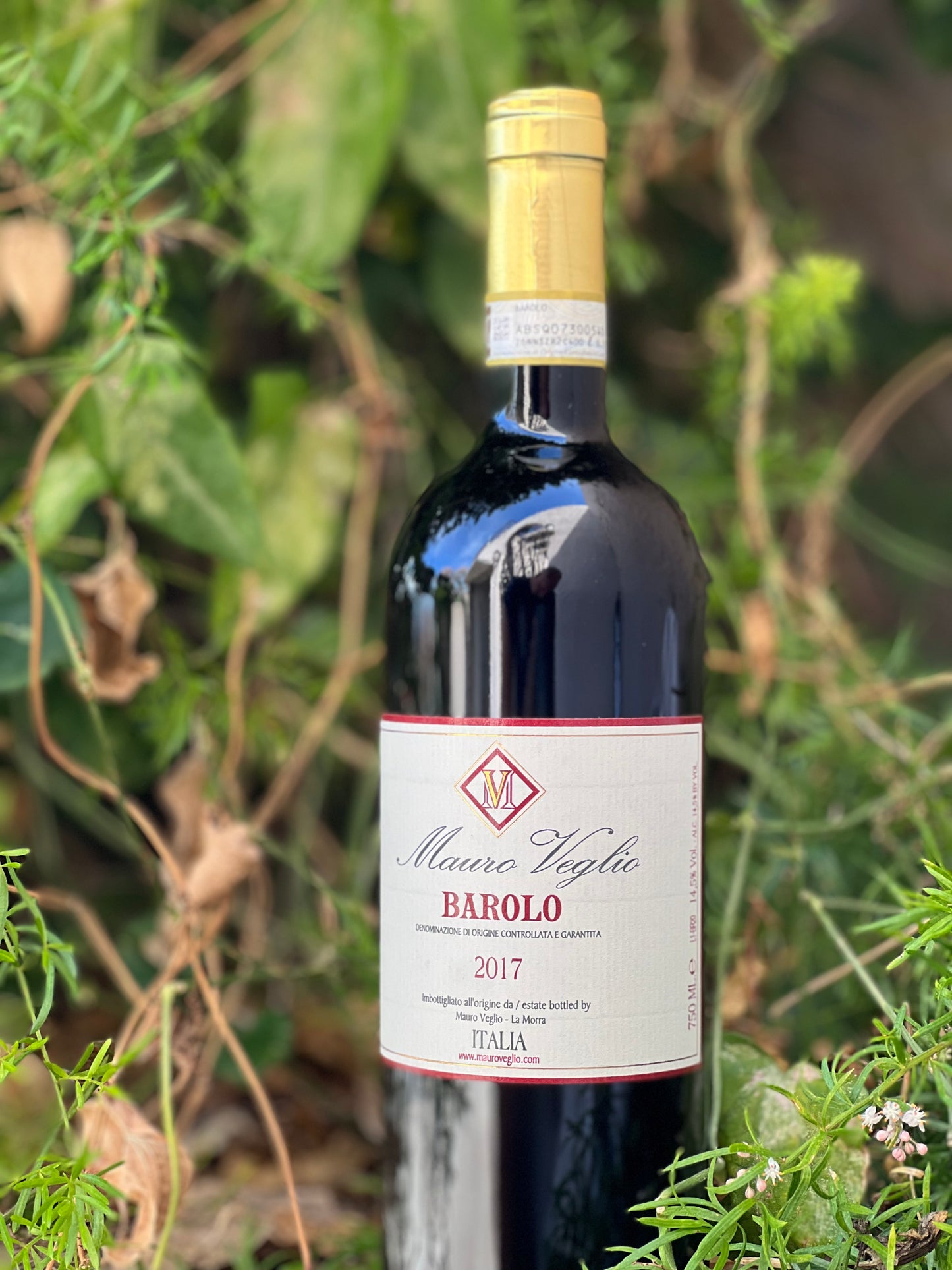The Sommelier's Box
Mauro Veglio, Barolo 2017
- Regular price
- $50.00 USD
- Regular price
-
- Sale price
- $50.00 USD
- Unit price
- per
Couldn't load pickup availability
Region: Barolo, Piedmont, Italy
Varietal: 100% Nebbiolo
Tasting notes: Subtle aromas of French oak, ripe dark-skinned fruit and cedar form the nose. Linear and firmly structured, the palate offers dried cherry, tangy orange zest and ground clove alongside close-grained, mouth-drying tannins that grip the close. Give the tannins a couple of years to unwind, then drink sooner rather than later to enjoy the fruit richness. Drink 2023–2027.
Producer: “We were born and grew up in the hills of Barolo: a territory that has sustained us, whose people have helped us grow up, and whose wine we have fallen in love with, to which we dedicate our lives and our passion.” The Veglio family has been dedicated to working the land for generations. Since the beginning of the 1900s in the village of Ciotto near La Morra, they have been cultivating vines, orchards & gardens, and raising livestock. Born in 1928, Angelo Veglio developed a dream to leave the life of a sharecropper to dedicate himself to making wine. He purchased his first vineyard in the 1960s in Gattera and started making wine under his own name using native Langhe grapes—above all, Nebbiolo. After his son Mauro took over the management of the winery in 1986, the winery & vineyards were restored, and the first experiments in winemaking were carried out, working together with groups of visionaries to bring innovations in making Barolo. No longer were the wines rustic and poorly crafted, but they were clean, ready to drink, with a higher polyphenolic extract and a measured use of small oak barrels. Today, the winery produces 80,000 bottles from about 23 hectares (16 ha owned) of vineyards distributed throughout La Morra and Monforte d’Alba. The family believes in making balanced wines, respecting the land and its characteristics of origin, with attentive work in the vineyard and just as much care taken in the cellars.
Vineyard and Winemaking: This bottling is made from grapes grown in the Veglio family’s youngest and most vigorous vineyards in the townships of La Morra and Monforte d’Alba, and is vinified as it was in the past for a balanced harmony of its diverse characteristics. Maceration on the skins takes place in stainless steel tanks at a controlled temperature for 10-15 days. The grapes are then pressed and alcoholic fermentation is concluded in stainless steel (about 20 days), where malolactic fermentation also takes place at a controlled temperature. Towards December, the wine is transferred to small barrels of oak, 15-20% of which are new and 80% used, where it remains to age for 24 months. After decanting in stainless steel, the wine is bottled without fining or filtration. Only 25,000 bottles produced.
Share


